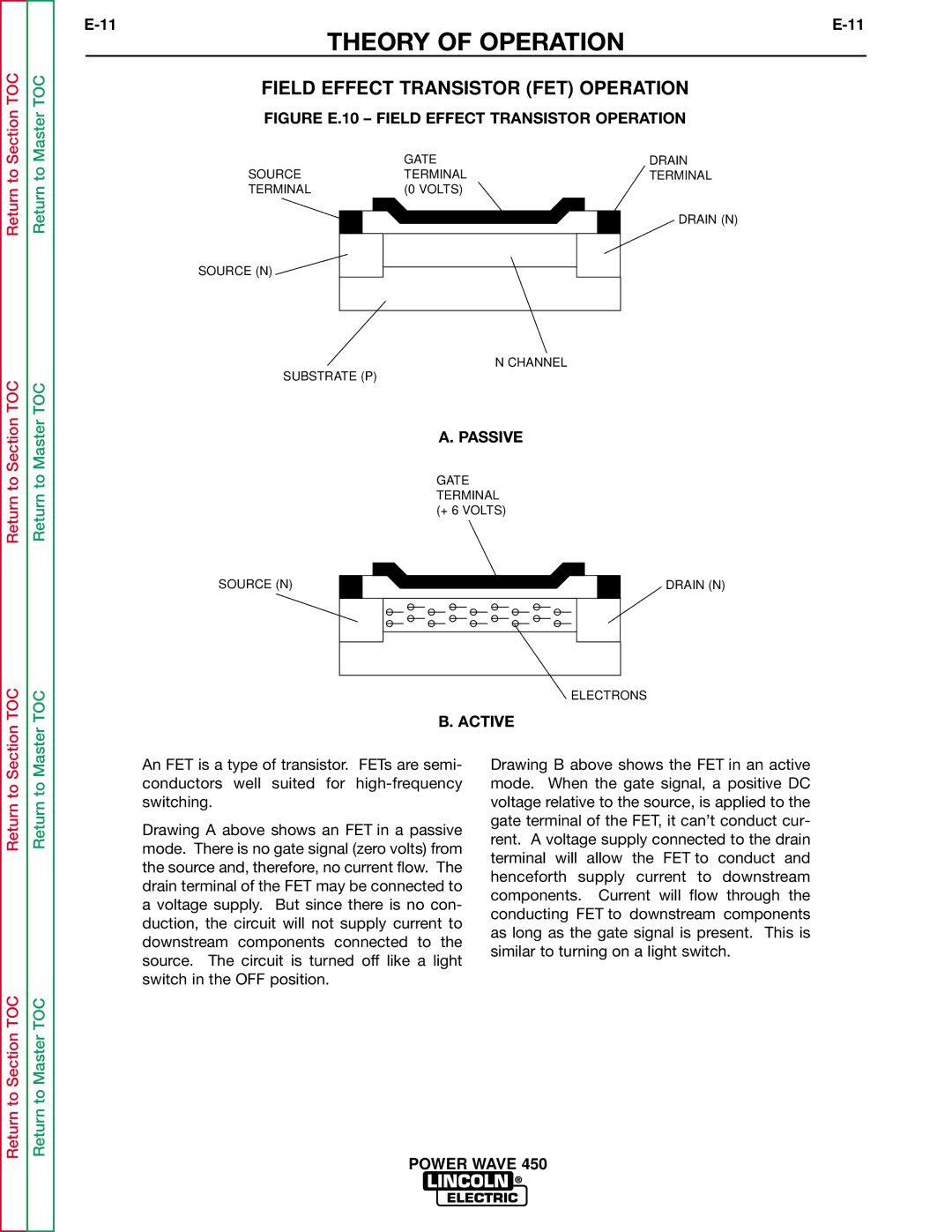
Section TOC
Master TOC
THEORY OF OPERATION
FIELD EFFECT TRANSISTOR (FET) OPERATION
FIGURE E.10 – FIELD EFFECT TRANSISTOR OPERATION
Return to
Return to Section TOC
Return to
Return to Master TOC
|
| GATE |
SOURCE |
| TERMINAL |
TERMINAL |
| (0 VOLTS) |
|
|
|
|
|
|
SOURCE (N)
N CHANNEL
SUBSTRATE (P)
A. PASSIVE
GATE TERMINAL (+ 6 VOLTS)
DRAIN
TERMINAL
DRAIN (N)
Section TOC
Master TOC
SOURCE (N) | DRAIN (N) |
ELECTRONS
B. ACTIVE
An FET is a type of transistor. FETs are semi- conductors well suited for
Drawing A above shows an FET in a passive mode. There is no gate signal (zero volts) from the source and, therefore, no current flow. The drain terminal of the FET may be connected to a voltage supply. But since there is no con- duction, the circuit will not supply current to downstream components connected to the source. The circuit is turned off like a light switch in the OFF position.
Drawing B above shows the FET in an active mode. When the gate signal, a positive DC voltage relative to the source, is applied to the gate terminal of the FET, it can’t conduct cur- rent. A voltage supply connected to the drain terminal will allow the FET to conduct and henceforth supply current to downstream components. Current will flow through the conducting FET to downstream components as long as the gate signal is present. This is similar to turning on a light switch.
Return to Section TOC
Return to Master TOC
